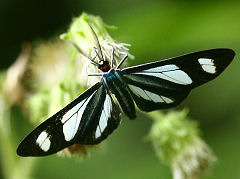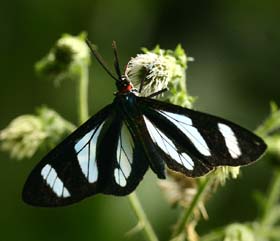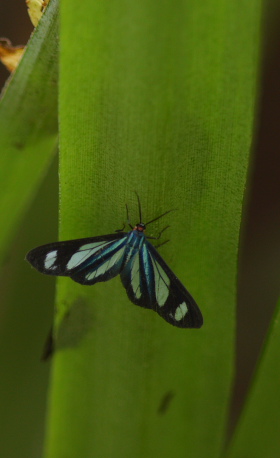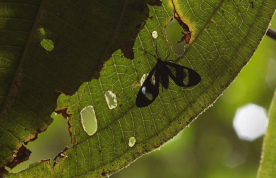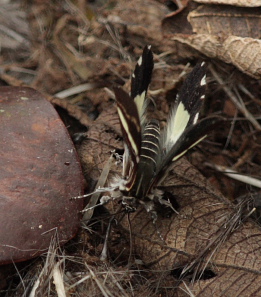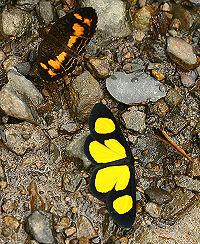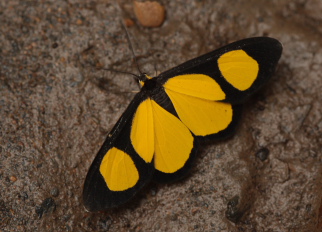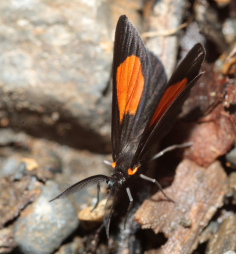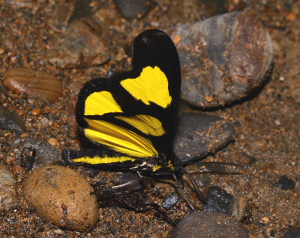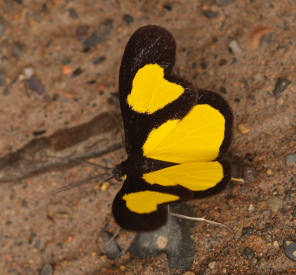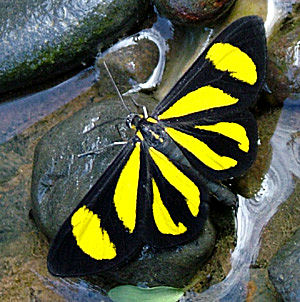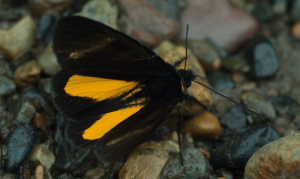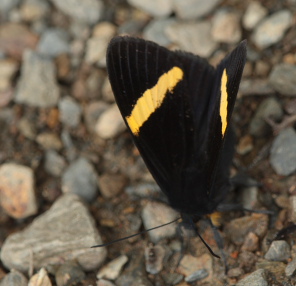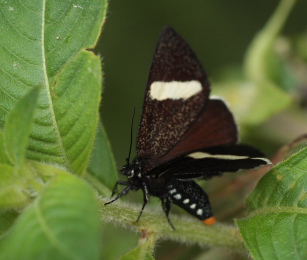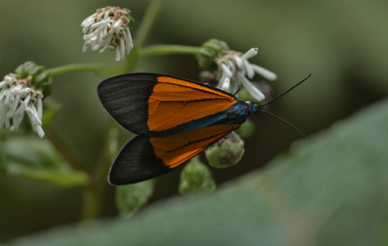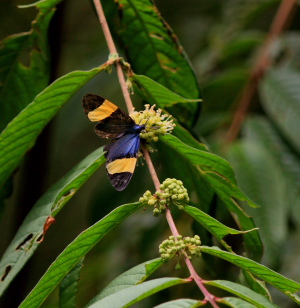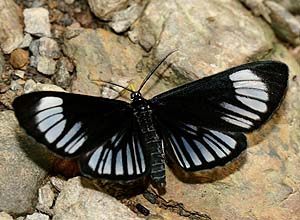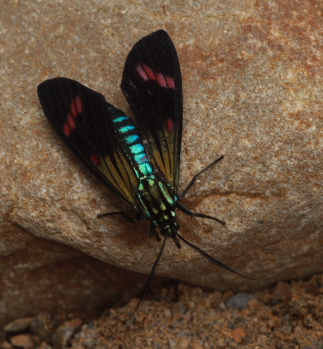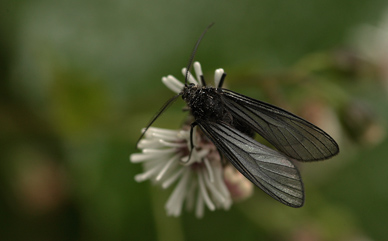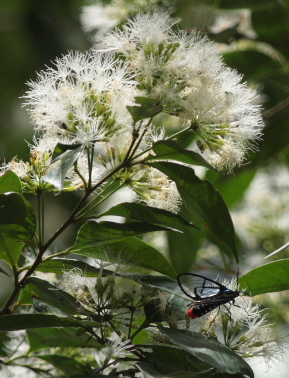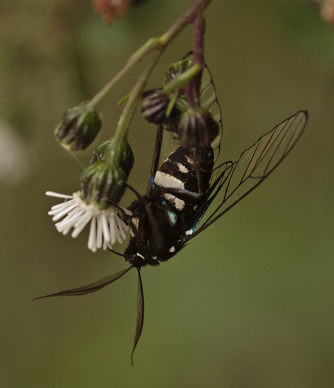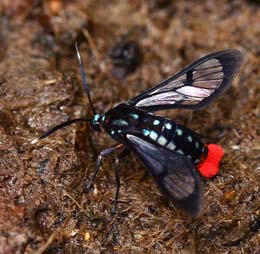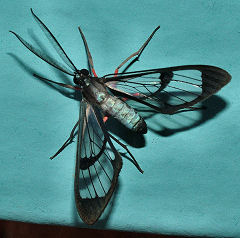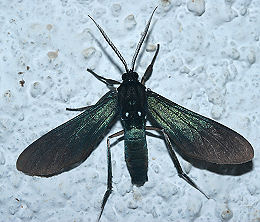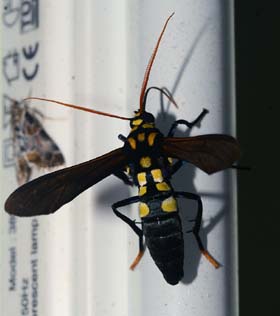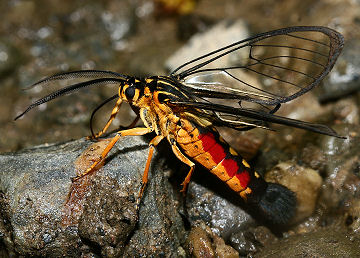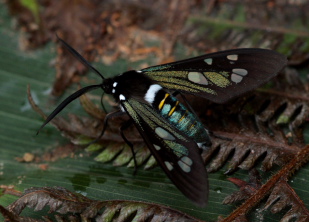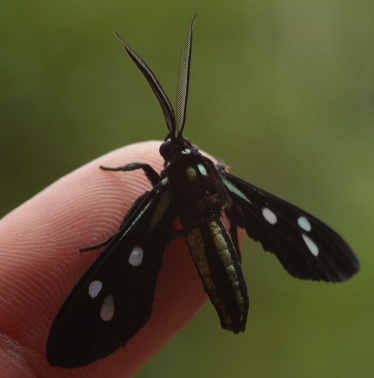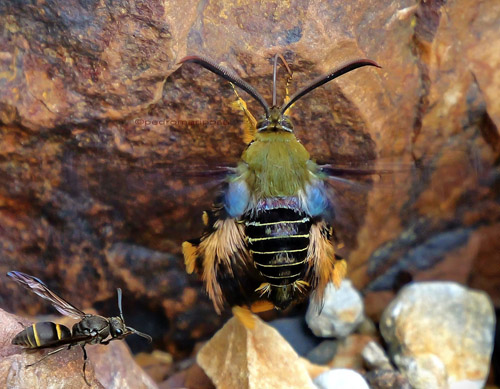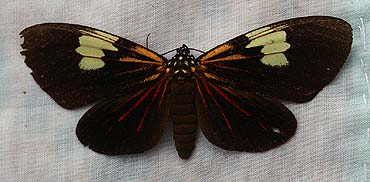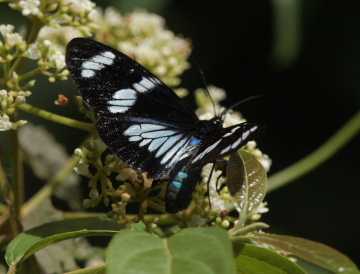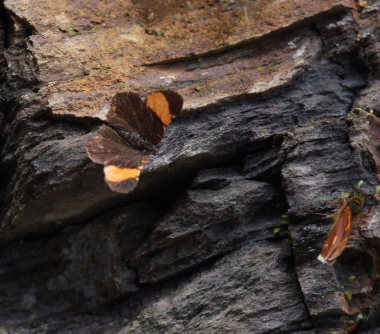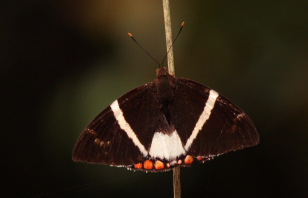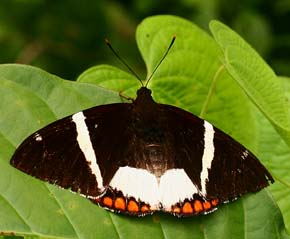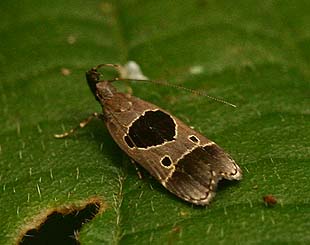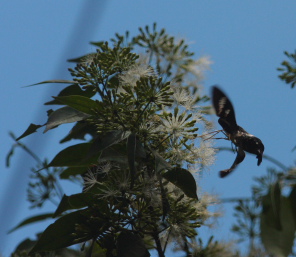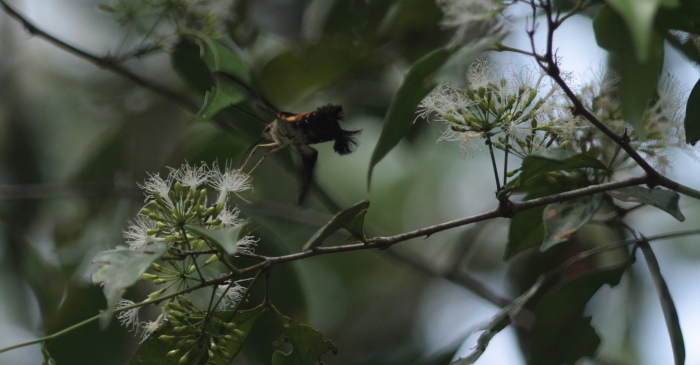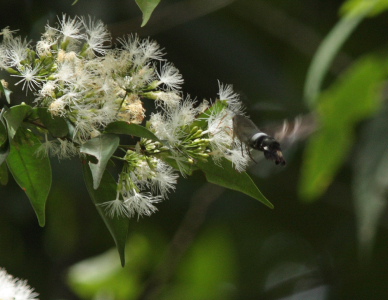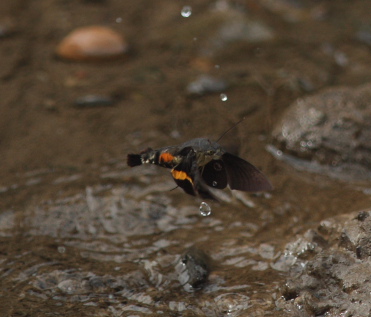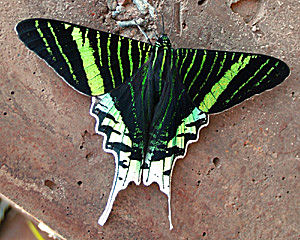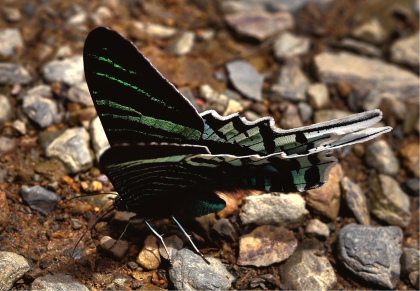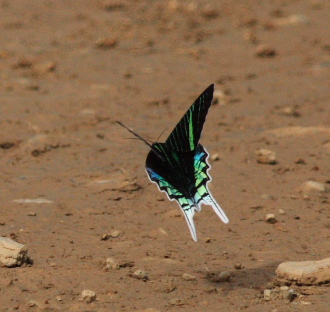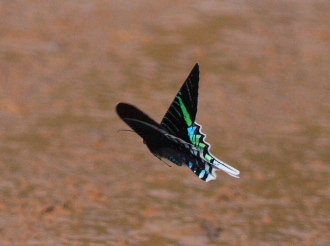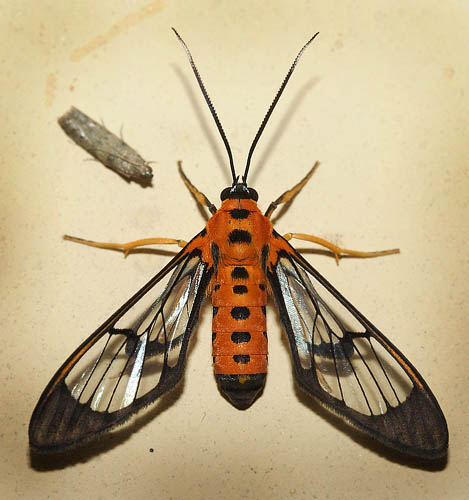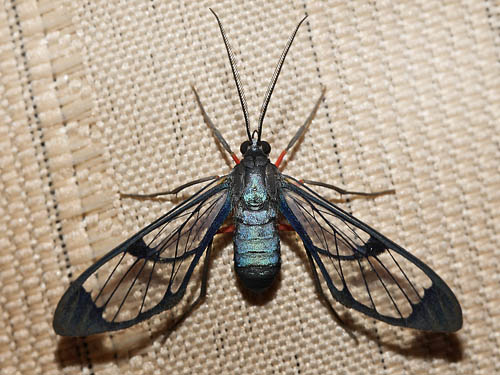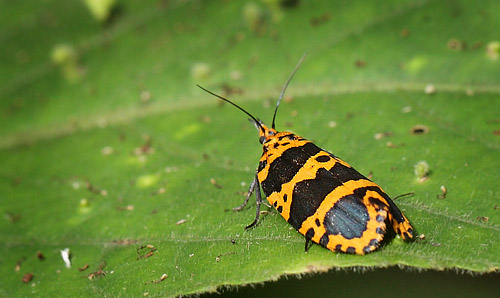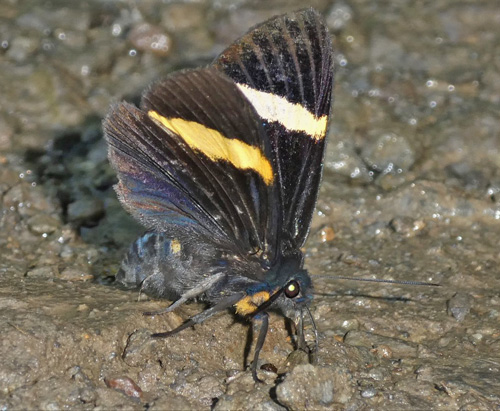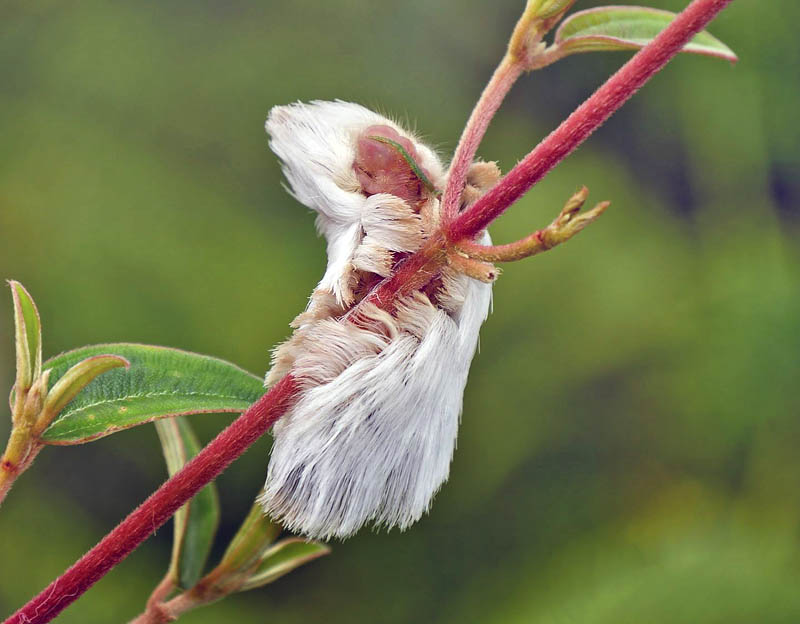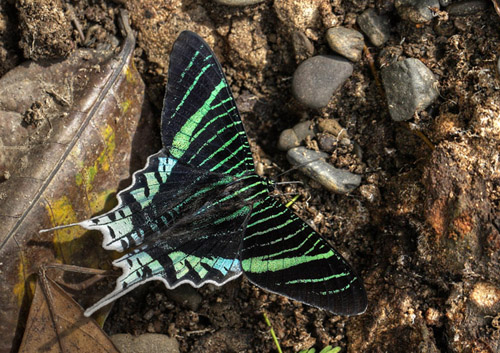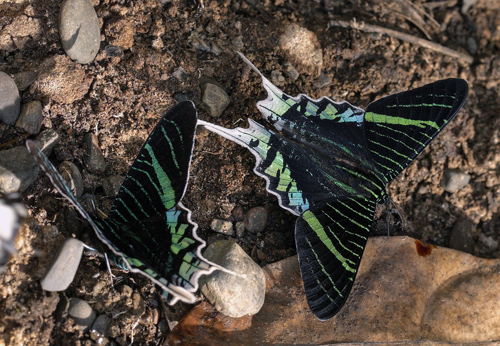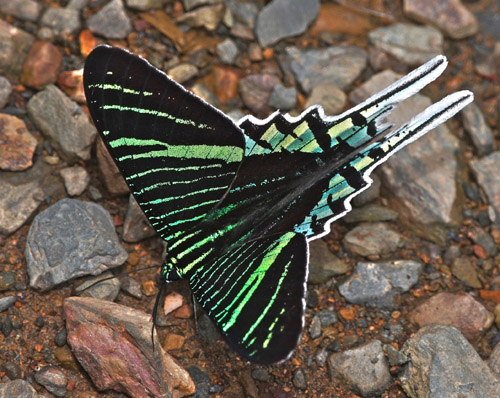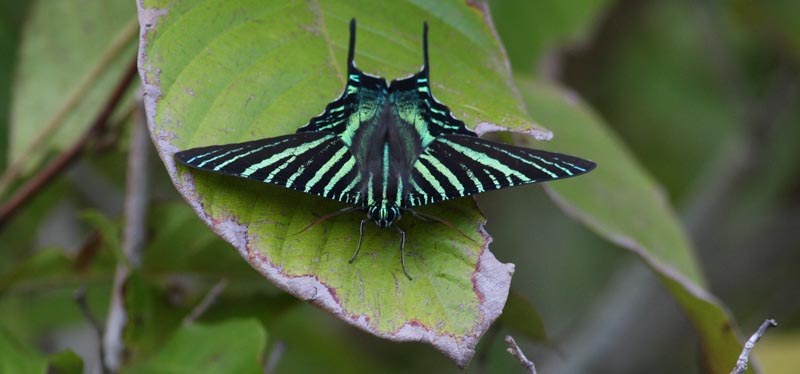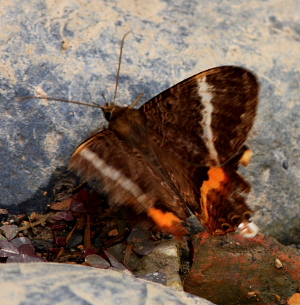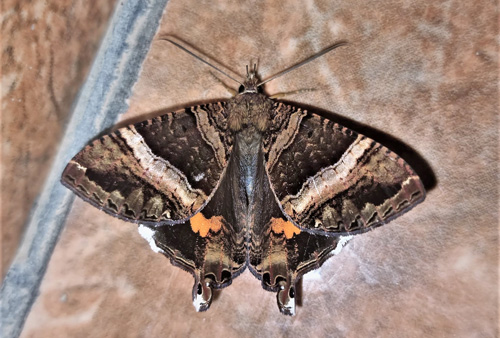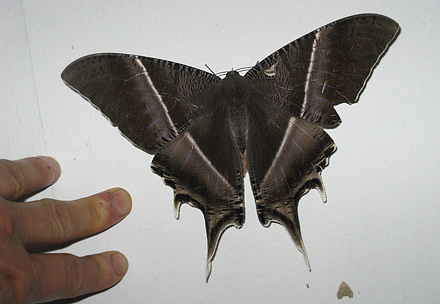Bolivian Butterflies Checklist
sitio 145
Dayflying Moths from Yungas
first update d. 27 march 2010
last update d. 13 march 2023
Redactor: Lars Andersen
bajo construccion
_____________________________________________
View from Kori Wayku Inca Trail, Coroico, Yungas, Bolivia d. 2 february 2010. Photographer; Lars Andersen
Melittia species? A genus
in the family Sesiidae.
Rio Tunki 1740m., Caranavi Highlands, Yungas, Bolivia march 8, 2023. Photographer; Peter Møllmann
Clearwing Tiger Moth, Hyalurga
fenestra (Linné, 1788).
Caranavi,
Yungas, Bolivia february 5, 2018. Photographer; Peter Møllmann
Castnius pelasgus (Cramer, 1779)
Giant
Butterfly Moths, Castniidae family
sharing mimicry with Black Metalmark, Melanitis species. Riodinidae family.
Provincia
Caranavi, Yungas, Bolivia d. 17 january 2018. Photographer; Kirsten
Matthiesen
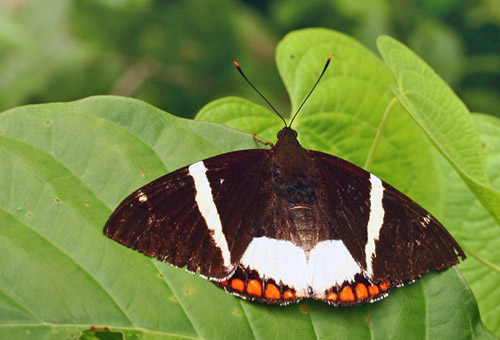 |
Giant Sugarcane-Borer, or Banana
Stem Borer, Telchin
licus
Fabricius (Castniidae). Castniid moths, is a small family of moths with fewer than 200 species: The majority are Neotropical with some in Australia and a few in south-east Asia. The Neotropical species are commonly known as giant butterfly moths. The caterpillar of this gaudy moth bores into the stems of sugar-cane. Bananas or Heliconia. Castnia genus of dayflying moths, together with other Castniids, were a one time grouped with the butterflies they resemble in antennal shape, wingshape and coloration. |
||
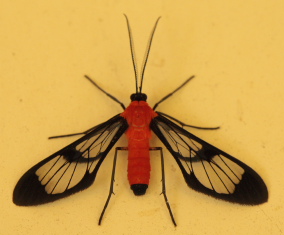 |
Ctenuchidae. Many of the 3000 species of this family of moths are mimics of various genera of wasp. |
||
 |
Chetone Boisduval (Hypsidae). About 11 species are place in this neotropical genus of day-flying moths. Most species are apparently mimetic partners of various species of Heliconiinae, Ithomiinae and other butterflies and moths. |
||
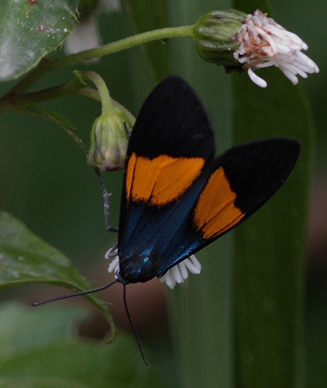 |
Darna Walker (Hypsidae). There are a present 18 species exclusively neotropical genus of moths. One group of brilliantly colored species which includes D. colorata, is a model for species of Lucillella, a genus of Riodinidae butterflies. Another group is mimetically associated with Dioptidae. |
||
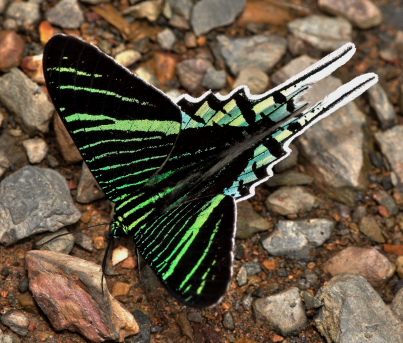 |
Urania Fabricius (Uraniidae). This is the only New World representative of its family. In colour patern and particularly in coloration it is similar to the African and Madagascan genus Chrysiridia. There are about 8 species, all solely neotropical in distrubution. |
||
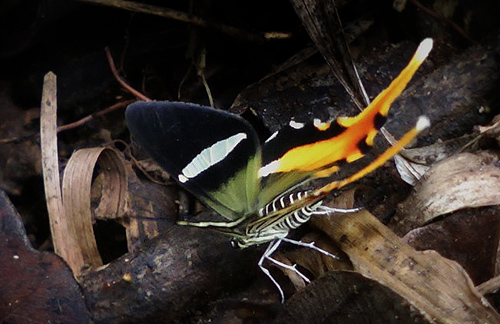 |
Erateina
julia. (Subfamily Larentiinae
5800 species. Family Geometridae). comprises of about 80 known species. Most are dark brown on the upperside, with a white patch or bar on the forewing. The hindwings are often marked with streaks of yellow or red, but in some species are plain brown. |
||
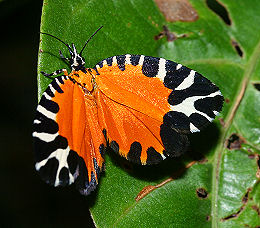 |
Pseudatteria Walsingham (Tortricidae). This is a genus of micro-moths with large, brightly coloured species, probaly some of the most remarkable-looking of all the neotropical Tortricids. Since all the species of Pseudatteria are brightly coloured and conspicuously patterned it is assumed that they are the distasteful models and the species in other genera, which look like them, the mimics. |
||
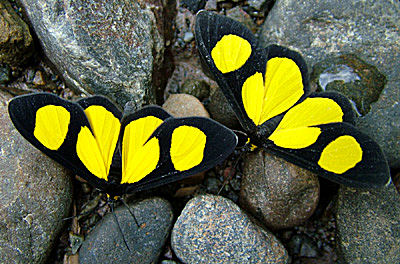 |
Linnaeus's Joker, Cyllopoda
jatropharia (Linnaeus, 1758). It seems likely that Cyllopoda could be members of a mimicry complex that involves several genera of yellow and black diurnal moths including Formiana, Xanthiris, Seriocastnia and Myonia; and butterflies such as the metalmarks Riodinidae; Chamaelimnas briola and the skippers Pyrginae; Cabirus procas. The genus Cyllopoda comprises of 16 species. They are members of the family Geometridae, subfamily Sterrhinae, which is itself comprised of over 2800 species worldwide. Few however are as striking as the yellow/black Cyllopoda genus! |
Gonora paphia (Druce 1893). Family; Geometridae. subfamily; Ennominae
Provincia Caranavi, Yungas, Bolivia February 2007. Photographer: Lars Andersen
Lars Andersen January 30, 2020:
I also found ID a Aletta Tiger, Hypocrita aletta ( Stoll, 1782)
at "Learn about Butterflies and Moths" by Adrian Hoskins.
So thank you so much for correct ID Dominik Hofer!
| Sacramento Alto between Yolosa and Unduarvi. 2700 m.a. 30th January 2015. Photographer; Peter Møllmann |
Flannel Moth, Family: Megalopygidae. Caranavi december 2014. Photographer; Peter Møllmann
_____________________________________________
Green-banded Urania. Urania leilus
April 27, 2020
Green-banded Urania. Urania leilus (Linnaeus, 1758). Photographer: Lars Andersen
| Green-banded
Urania. Urania leilus (Linnaeus, 1758). Swallowtail moths / Sunset moths, is a day-flying moth of the family Uraniidae. Superfamily Geometroidea. Habitats and behaviors: The habitat consists of riverbanks in primary and secondary rainforest and cultivated area at elevations between sea level and about 800 m (2,600 ft). Often seen by ravines with streams that cross country roads where they suck on urine-tainted ground, or at the edges of drying pools. Foodplant: feed exclusively on species of the toxic spurge Omphalea. Distribution: It is found in tropical South America east of the Andes, including Suriname, French Guiana, eastern Colombia, Venezuela, eastern Ecuador, Brazil, northern Bolivia, eastern Peru, and Trinidad. Are local common in Caranavi to Santa Fe, 2001ft altitude belongs Rio Coroico and Rio Broncini. Yungas, Bolivia. It has been recorded as a migrant to the central and northern Lesser Antilles such as St. Kitts, Barbados and Dominica. There are two Urania species commonly seen in the Amazonian region - U. leilus and U. fulgens. The latter species is scarcer and differs in that it lacks the outermost green bands on the forewings, and has reduced green markings on the hindwings. |
Cuban Sunset, Urania boisduvalii (Guérin-Méneville, 1829). Cuba d. 14 march 2020. Photographer; Erling Krabbe
_____________________________________________
Sematuridae
April 28, 2020
| Homidiana
canace (Hopffer, 1856). Coroico, Yungas, Bolivia d. 25 january 2007. Photographer; Lars Andersen |
Coronidia
subpicta. (Walker, 1854). Coroico, Yungas, Bolivia d. 23 january 2008. Photographer; Lars Andersen |
Andean Jungle Dragon, Coronidia
orithea (Cramer,
1780) subfamily Sematurinae, family Sematuridae.
Dayflying moths. Foodplant: Square-Stemmed Mistletoe, Phoradendron quadrangulare.
Kori Wayku inca trail elev. 2000 m. d. 11 February
2012. Photographer: Lars Andersen
Jungle Dragon, Coronidia
leachii (Godart, 1819).
Caranavi,
Yungas, Bolivia november 27, 20121 Photographer; Peter Møllmann
Sematuirid Moths, Mania lunus (Linnaeus,
1758) subfamily Sematurinae, family; Sematuridae.
Caranavi, Yungas, Bolivia d. 2 january 2020. Photographer; Peter Møllmann
| American Swallowtail Moths / Jungle Dragon Moths, is a day and night-flying moth of the family Sematuridae. Superfamily Geometroidea. These are large day- or night-flying moths, usually tailed and similar to Uraniidae in general appearance (except for the genera Apoprogones (i species s. Africa), whilst in Neotropics the Sematurinae (29 species). Anuropteryx and Lonchotura (12 species) totaly 41 species. |
Tropical Swallowtail Moth, Lyssa zampa (Butler, 1869). Family Uraniidae.
Kinabatangan, Sabah, Borneo d. 11 march 2008. Photographer; Hanne Christensen
_____________________________________________
Mariposas de Bolivia
Enero 2010
por Peter Møllmann y Lars Andersen
| Mariposas de Bolivia Enero 2009 por Peter Møllmann y Lars Andersen
|
link to Neotropical Butterflies of Will Carter and Kim Garwood, Metalmarks
dont use this pictures without permission from:
photographer © Lars Andersen

